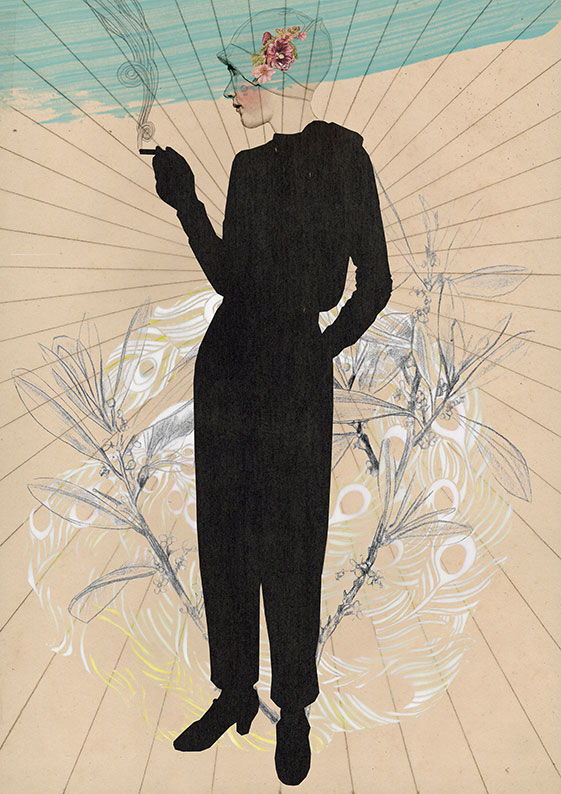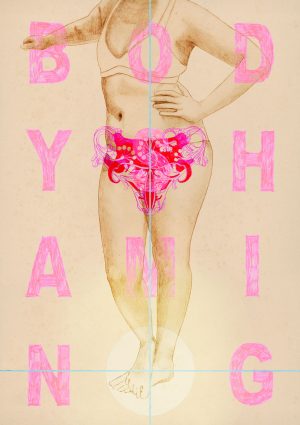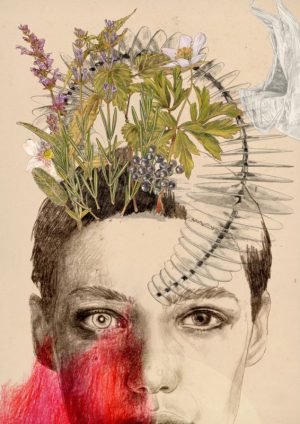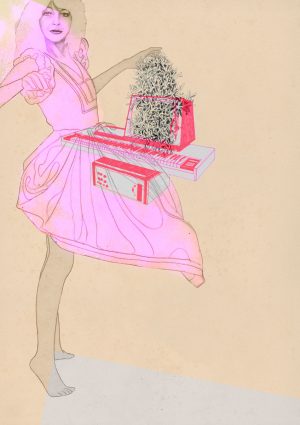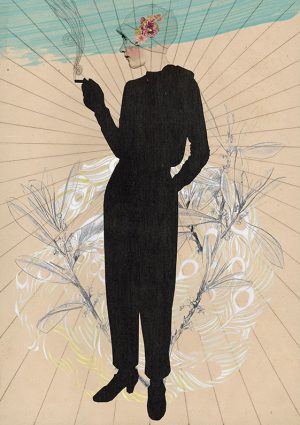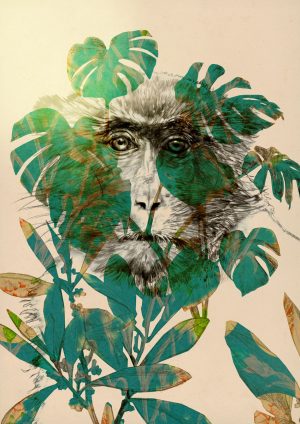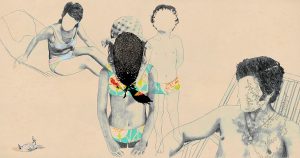DIE CHERUBIN
Doris von Schönthan (* 1905 in Worms als Maria-Dorothea Ehemann | + 1961 in Paris)
Model, Werbetexterin, Journalistin, Fotografin
In den Goldenen Zwanzigern gehörte Doris zu den schillerndsten Figuren der Berliner Künst- lerszene. Sie war als Model, Journalistin und Fotografin erfolgreich, eine selbstbewusste und emanzipierte Frau, die ihre Sexualität frei und selbstbestimmt auslebte. Doris war eine Symbolfigur für die Aufbruchsstimmung in den Zwanzigerjahren. Sie hat sich nicht nur beruflich verwirklicht, sie hat ihr Leben genossen, exzessiv gelebt und gefeiert. Sie bewegte sich in intellektuellen Künstlerkreisen, zu ihren Freunden zählten die Geschwister Mann. Für Klaus Mann wurde sie die Gefährtin seiner „Grenzgänge zwischen Selbsterfahrung und Selbstzerstörung“. Ihre Freundin Grete Weil bezeichnete sie mit einer Mischung aus Erstau- nen und Bewunderung als Cherubin. Doris verkörperte Zartheit und Sanftmut, Charisma und Leidenschaft. Sie besaß eine besondere mentale und emotionale Stärke.
Der Schriftsteller Franz Hessel verliebte sich bis über beide Ohren in sie und machte dies auch öffentlich – in seinen „Doris-Texten“ beschrieb er ihr besonderes „Feingefühl, das die Seele der Dinge berührt“.
Doch wer sich auf Spurensuche begibt, erkennt, dass sie weit mehr war als ein Glitzergirl der Boheme. Doris war politisch engagiert und bewies Loyalität, Menschlichkeit und Zivil- courage während des Dritten Reiches.
1933 schrieb sie in einem Brief an Klaus Mann: „Der Zustand in Berlin ist unbeschreiblich. Die letzten Freunde fliehen.“ Zusammen mit Elisabeth Hauptmann und Friedrich Wolf ver- teilte sie in Berlin antifaschistische Flugblätter. Ihren Freunden aus den linksintellektuellen Kreisen Berlins stand sie mutig zur Seite und bot politisch Verfolgten wie Rudolf Olden in ihrer Wohnung Unterschlupf. Als sie sich strikt weigerte, beruflich im Sinne der National- sozialisten zu formulieren, wurde es auch für sie so gefährlich, dass sie nach Frankreich emigrierte.
In Paris lernte sie den politischen Aktivisten Bruno von Salomon kennen und lieben. Sie heirateten und engagierten sich in der Volksfrontarbeit. Bei Kriegsausbruch gerieten sie in Gefangenschaft, saßen zeitweilig in Internierungslagern und schlossen sich später der Ré- sistance an.
Beide überlebten den Krieg, aber der Tribut für die Jahre der Emigration, der Illegalität und des politischen Kampfes war hoch. Nach dem Tod ihres Mannes, einem erfolglosen Kampf um finanzielle Wiedergutmachung in Deutschland sowie einem Suizidversuch vereinsam- te und verelendete Doris. Sie wurde obdachlos, war physisch und psychisch zerrüttet. Am Ende fehlten ihr die Kraft und der Mut zum Leben. Doris ist am Regime der Nazis zerbro- chen. Doch ihr Mut, ihr Engagement und ihre Menschlichkeit leben weiter.
THE CHERUBE
Doris von Schönthan (* 1905 as Worms als Maria-Dorothea Ehemann | + 1961 in Paris)
Model, copywriter, journalist, photographer
Doris was one of the most vibrant characters in the Berlin art scene during the roaring twen- ties. A successful model, journalist and photographer, Doris was a self-confident and se- xually liberated woman who lived a free and self-determined life. She embodied the spirit of optimism in the 1920s. Doris lived her life to the full, not only as a regular on the party circuit but also by making the best use of her professional potential. She surrounded herself with intellectuals and artists, counting the Mann siblings among her friends. In his diary, Klaus Mann described her as „a companion on my explorations of the boundary lines between self- awareness and self-destruction“. Both in astonishment and admiration for Doris, her friend Grete Weil called her “Cherub”. Doris was both fragile and gentle, as well as having an ab- undance of charisma and passion. She possessed an unusual kind of mental and emotional strength.
The writer Franz Hessel fell head over heels in love with her, making his adoration public through his ‘Doris Texts’ where he described her special „sensitivity that touches the soul of things“.
Those who dig a little deeper discover that Doris was much more than simply a glamorous bohemian. She was politically active and demonstrated loyalty, humanity, and civil courage during the Third Reich.
In a letter to Klaus Mann in 1933 she wrote: “It’s impossible to describe how bad things are in Berlin. The last of my friends are fleeing.” Alongside Elisabeth Hauptmann and Friedrich Wolf, Doris distributed anti-fascist leaflets in Berlin. She had the courage to stand by her left- wing intellectual friends and used her flat to provide refuge for people like Rudolf Olden who had to escape political persecution. As the Nazis gathered power, she outright refused to take on writing work that in any way supported their ideology. This made things so dangerous for her that she had to emigrate to France.
In Paris she fell in love and married the political activist and fellow German journalist Bruno von Salomon. They were both involved in the Front Populaire joining other exiled German immigrants in forming political alliances against fascism. At the start of the war, the couple were imprisoned and temporarily sent to separate internment camps. They later joined the resistance against Nazi occupation.
Doris and Bruno survived the war, but the continuous political struggle, going against the law, and years spent in exile took a toll. Following the death of her husband and an unsuc- cessful battle for financial reparations in Germany, Doris unsuccessfully attempted suicide and was left destitute and alone. She was both physically and psychologically shattered and became homeless. In the end, she lacked the strength and courage to live. Doris was broken by the Nazi regime, but her courage, commitment and humanity live on.
